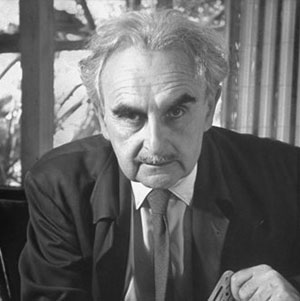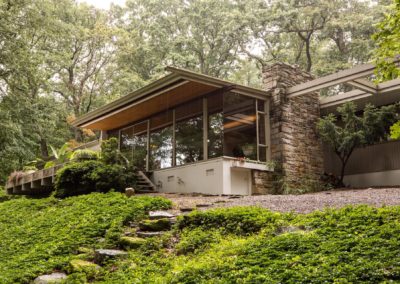Richard Neutra
Mid-Century Modern Architect
Born in Vienna in 1892, Richard Neutra studied under the provocative Adolf Loos, among others, before emigrating from Europe to the U.S. in 1923. Said to have been in awe of Frank Lloyd Wright, Neutra actually worked under FLW for a brief period before settling in Southern California where he steadily grew in acclaim for his “West Coast” interpretation and expression of the Modern Architecture movement.
Calling himself a “Biorealist”, Neutra’s style was represented by a combination of natural and man-made elements, using prefabricated parts in the foreground, large glass surfaces and barrier-free transitions, he wanted to make his buildings transparent and retain the impression of lightness. Time, in an attempt to succinctly identify the characteristics of Neutra’s work, wrote that the architect worked with “broad, glassy brows” and “spaciousness and compactness combined.” As Architectural Digest noted, “there was never such a thing as a typical Neutra building, there were patterns, formulas, themes, and motifs that distinguished his work from his modernist peers.” “[He] was a prophet of clean, crisp modernism.”
Neutra believed that an architect needed to have a “razor-sharp sense of individuality,” so it comes as no surprise that he rejected the idea that the architect’s vision was to come first and foremost in a building or home design. Although Neutra’s works demonstrated a unique artistry in the expression of his vision, he felt it was of utmost importance to meet the needs of his clients. He was famous for the attention he gave to them and for not simply imposing his vision at the expense of their needs, signifying his absolute adherence to his ideals rather than to his ego. A less disciplined architect, especially one of Neutra’s stature (he was featured on the cover of Time in 1949), may have let his own vision overshadow the wishes of his clients. Neutra’s approach even led him to employ detailed questionnaires, if warranted, to ensure that he understood his clients’ needs. For Neutra, function held equal importance to form. In fact, it could be argued that, for him, they were inseparable. As Time observed about his structures, “their beauty, like that of any sea shell, is more than skin-deep—practical, not pretentious.”
Pretention would have no place in Neutra’s world. Adolf Loos, one of Neutra’s professors in Vienna, zealously preached the theory that “the evolution of culture is synonymous with removing decoration from utilitarian objects.” Furthermore, Loos felt it was criminal to force builders to waste their time on the ornamentation that only accelerated the time when the work would become outdated. This architectural theory, parallel with the characteristics of Modern Architecture, is reflected in Neutra’s work and speaks to its timelessness. His clientele certainly think so. Some fifty years after being a client of Neutra’s, John Clark, (owner of Clark House in Pasadena, CA) said “this architecture, in my view, will be modern fifty years from now.”

